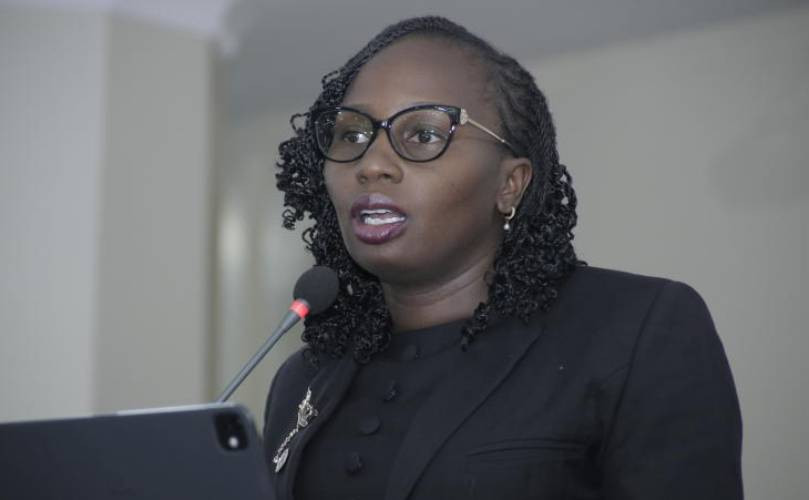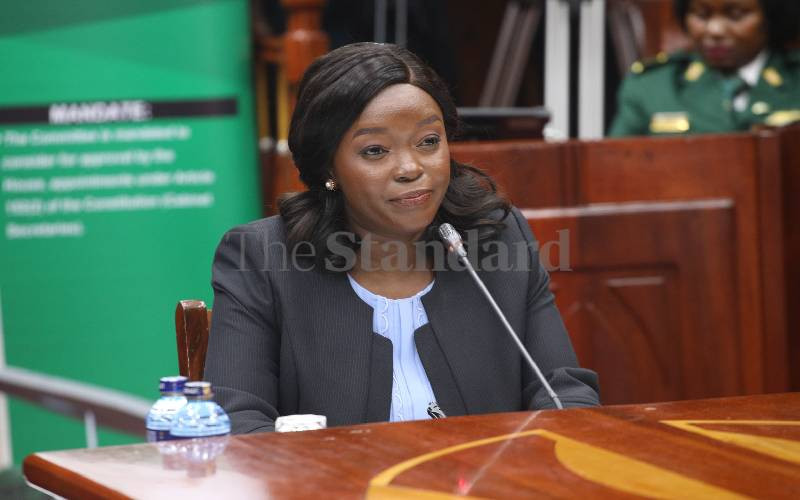By FRANCIS NGIGE
President Kibaki condoled with Uganda’s President Yoweri Museveni and assured him Kenya would get to the bottom of his military choppers’ crashes on Mount Kenya as eight more soldiers were rescued.
The message went out as intriguing questions arose about the near-simultaneous helicopter crashes, two of which burnt out on the ground, even as two soldiers were confirmed dead and four missing.
On Tuesday evening the bodies were moved to Nairobi, along with the eight soldiers rescued Tuesday and seven on Monday.
Top on the list of questions is whether it is true the four Ugandan pilots landed their helicopters in an isolated private farm in Kapchai village in Sirisia, while in the full knowledge they were ferrying heavy military weapons to Somalia in anticipation of African Union’s strike at the heart of Al-Shabaab.
Even more poignant is the interest Kenya Government took on this claim to the extent that Tuesday its regional administrator was at the farm linking the farmer with Government Spokesman Alfred Mutua for a phone conversation. At the end of which the old man said the helicopters merely flew low above his land, and he could see the occupants.
Strange coincidence
Secondly, is why the lead pilot in the formation sauntered through the bad weather over Mt Kenya, while the other three came down within a 500m radius of each other.
Investigators would also be asking about the technical capabilities of the military helicopters, which ideally should move at night and even pick out targets, but which in this case seemingly could not survive foggy and turbulent winds.
They will also be interested to know about the pilots’ level of training and experience, and whatever technical support they got from the Kenya Defence Forces, which gave them a safe passage
Although bad weather has largely been blamed for the accident, the cause of the multiple crashes is not conclusive given the lingering questions.
The crash, perhaps the first on Kenya airspace involving multiple aircraft from a foreign army, has raised other burning questions, including the strange coincidence that three came down, but the one leading the formation made it to Mogadishu.
Kenyan and Ugandan investigators would be interested to know if the pilots’ unfamiliarity with the route, despite their training and guidance from the helicopters’ own gadgets, could have contributed to the disaster. Officials explained the pilots were new to the terrain and might have followed a wrong route, which on aviation is marked a No-Fly Zone, and ran into turbulent weather.
But could the lead helicopter have changed course and the others did not quickly pick out the deviation because they were flying with their radios strategically on silent mode, and visibility turned poor?
They will also be asking, like many Kenyans, if KDF guided their colleagues around the safest route and if loss of communication was to blame.
Stay informed. Subscribe to our newsletter
Chief of General Staff General Julius Karangi Tuesday said his team was in touch with the four helicopters until after refueling in Nanyuki, adding his Force had made all necessary arrangements for their safe flight.
He said KDF learnt of the missing choppers at 5pm when one of the soldiers in the ill-fated helicopters made a distress call using his mobile.
Gen Karangi told Parliament’s Defence and Foreign Relations Committee the last reported stopover for fuelling was Nanyuki, where a Kenyan soldier was present.
But from Nanyuki, Gen Karangi added, only one helicopter made it to Garissa on Sunday. The other three reportedly crashed 30 minutes into their flight to Garissa.
One of the seven soldiers rescued on Monday in the first helicopter recovered, recounted how their pilot scrambled to turn his flight back in the final moments.
UGANDA SOLDIERS SILENT
Brigadier Francis Ogolla of KDF explained that after the four helicopters had left Nanyuki Airstrip, one of them reported it had crash-landed inside the forest.
“The other one, which was leading the formation, landed safely in Garissa, but also reported that it had lost communication with the rest,” he said at a media briefing in Nanyuki.
The Kenya Wildlife Service Senior Warden in charge of Mount Kenya, Simon Gitau, said a search and rescue team found the two wreckages barely a kilometre from the one found on Monday. “We found two bodies, one of the pilot strapped to his seat, and another a few metres away.” He added: “The helicopter was burnt to ashes in the middle part.”
The eight survivors were rescued from the wreckage 36 hours after the crash. They were all from the third chopper, which was found overturned at the base of a nearby valley.
They were spotted away from the crash scene at 7am. “From the scene it appears that the soldiers were safe and were possibly walking to safety,” said Ogolla. But the Kenyan Military and their Ugandan counterparts remained tight-lipped on whether heavy artillery was lost in the crash.
An official involved in the operation said the rescuers did not go near the burnt helicopters for fear the ammunition could explode.
“We saw large containers that appeared to have ammunition and other military paraphernalia, which we thought was dangerous,” said the official, who did not want to be named. The missing choppers were located about 1,200 feet up the mountain. According to one of the officers involved in the rescue operation, one of the choppers was a burnt out shell. It appeared it burst into flames before it crashed, as its destroyed parts were scattered at the scene.
The helicopter number AF 808 bearing Ugandan colours was still smouldering when the rescuers arrived at the scene at 7.30pm. The intensity of the fire at the crash scene was evident. There were twisted metals strewn around the site with vegetation seared by fire. The other was found hanging on a cliff. Unlike the previous day when those rescued were flown to a Nanyuki private airstrip, Tuesday the survivors were taken to the Laikipia KDF Air Base.
The Kenyan military, responding to concerns raised about the level of their involvement in rescue mission, said it was in charge of the evacuation. Kenya Air Force called a rare press conference at the Laikipia Air Base where it gave a chronology of events leading to the crash.
“We have been co-ordinating the rescue efforts together with Kenya Wildlife Service and Tropic Air,” Brigadier Ogolla told the media, in reference to the heroic forays a private citizen, Captain Ben Simpson, had made to the first crash site and saved first batch of Ugandan soldiers on Monday.
Brigadier Moses Rwakitarate of the Ugandan People’s Defence Air Force was present at the briefing. Ogolla explained a combined team of Kenya Army, Kenya Air Force, KWS, and Tropic Air Aviation Services were involved in the rescue since Monday.
Brigadier Ogolla said six helicopters were being used in the rescue. “We used Tropic Air because it has a fleet of small helicopters that are capable of landing in a small place. Some of our military helicopters that headed for the scene were not able to land there,” he said.
— Additional reporting by Cyrus Ombati and Steve Mkawale.
 The Standard Group Plc is a
multi-media organization with investments in media platforms spanning newspaper
print operations, television, radio broadcasting, digital and online services. The
Standard Group is recognized as a leading multi-media house in Kenya with a key
influence in matters of national and international interest.
The Standard Group Plc is a
multi-media organization with investments in media platforms spanning newspaper
print operations, television, radio broadcasting, digital and online services. The
Standard Group is recognized as a leading multi-media house in Kenya with a key
influence in matters of national and international interest.
 The Standard Group Plc is a
multi-media organization with investments in media platforms spanning newspaper
print operations, television, radio broadcasting, digital and online services. The
Standard Group is recognized as a leading multi-media house in Kenya with a key
influence in matters of national and international interest.
The Standard Group Plc is a
multi-media organization with investments in media platforms spanning newspaper
print operations, television, radio broadcasting, digital and online services. The
Standard Group is recognized as a leading multi-media house in Kenya with a key
influence in matters of national and international interest.








